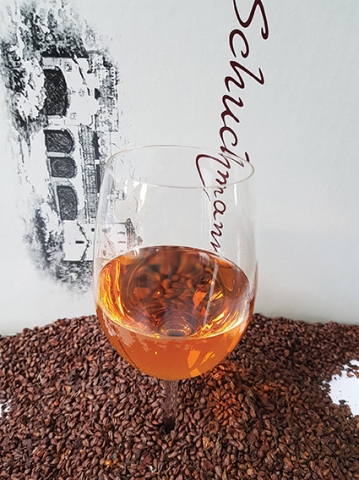Development of Rational Technology for New Georgian Dessert Wine
All types of wine are prepared from Georgian and foreign varieties of grapes in Georgia, a country with ancient traditions: table dry, semi-dry, semi-sweet, sparkling, fortified, dessert. For almost all of these, basic technological methods are used: Kakhetian, European, Red, Imeretian, Champagne, Caramelization, Stratified Wine Production, and more.
Georgian viticulture and winemaking have rich potential, not least for the rich native gene-fund of local vines, the micro-zones and separate soil-climatic factors of the Georgian regions, which give the opportunity to form an assortment of vastly different wine types.
Introduced vine varieties in Georgia, such as Chardonnay, Cabernet, Merlou, Malbec, Riesling and others, further enrich the diversity of wine produced in Georgia.
It is evident that the technological methods of enriching local and foreign vine varieties with biologically active substances today are a very real and prestigious issue of Georgian winemaking.
In the recent history of our country, the changes in politics and economy- the expansion of the private sector, the establishment of large factories and private companies -have allowed for the development and implementation of new methods. Moreover, Georgian historic varieties on Georgian soil have revealed the industrial potential of the above-mentioned foreign varieties.
The growth of the number of wine companies, study of ancient native species and the industrial potential of foreign varieties introduced in Georgia has led to an increase in the wine industry as well as the assortment of alcoholic beverages to include sweet, dessert, and aromatic drinks.
Schuchmann-Wines Georgia launched a study to discover the new technological capabilities of French white grape variety Chardonnay, cultivated on Georgian territory owned by the company in Napareuli village, Telavi Municipality, Kakheti, for the production of alcoholic drinks fortified with new healthy nutrients, as well as the potential rational use of grape seeds in this new technology as a precious secondary raw material obtained from waste, in order to increase the profitability of the sector.
Thus, we studied the possibilities of different variations of fortified wines produced from Chardonnay harvested in Napareuli, the organoleptic and physical-chemical properties of the drink made, and the polyphenolic compounds useful for health. From these we selected the best, according to which we made the new alcoholic beverage ‘Kavkasioni.’ It was made as follows:
I. In the first year, the separation of seeds from the residual waste (chacha) of physiologically ripe Chardonnay processed the European way; drying, packing and storage of the seeds;
II. In the second year, one month before the season, in order to obtain useful substances from Chardonnay dry seeds, tinctures were made by pouring rectified spirits on the seeds and storing them in a dark place;
III. In the second year, the processing of physiologically ripe Chardonnay grape took place in the European way – stem removing, squashing;
IV. Thermal treatment of dregs: heating to 70-800C for 20 minutes in thermal-exchanger, keeping temperature by steam generator;
V. Cooling and cleaning of hot dregs;
VI. Cold filter with sulfur anhydride of Fractions I and II;
VII. Cleaned sweet decanting into fermenting vessels with yeast, adding of the dry seeds of the previous year (25g/l);
VIII. Fermentation with seeds ≈ 5% sugar dissolution;
IX. Alcoholization of partially dissolved fermenting sweet and fermentation suspension with ready-made spirit tinctures;
X. Procrastination and cold-cleaning;
XI. Wine decanting.
Roland Burdiashvili is a Doctoral Student of the Iakob Gogebashvili Telavi State University and Production Director of “Schuchmann Wine Georgia” LLC
By ROLAND BURDIASHVILI











